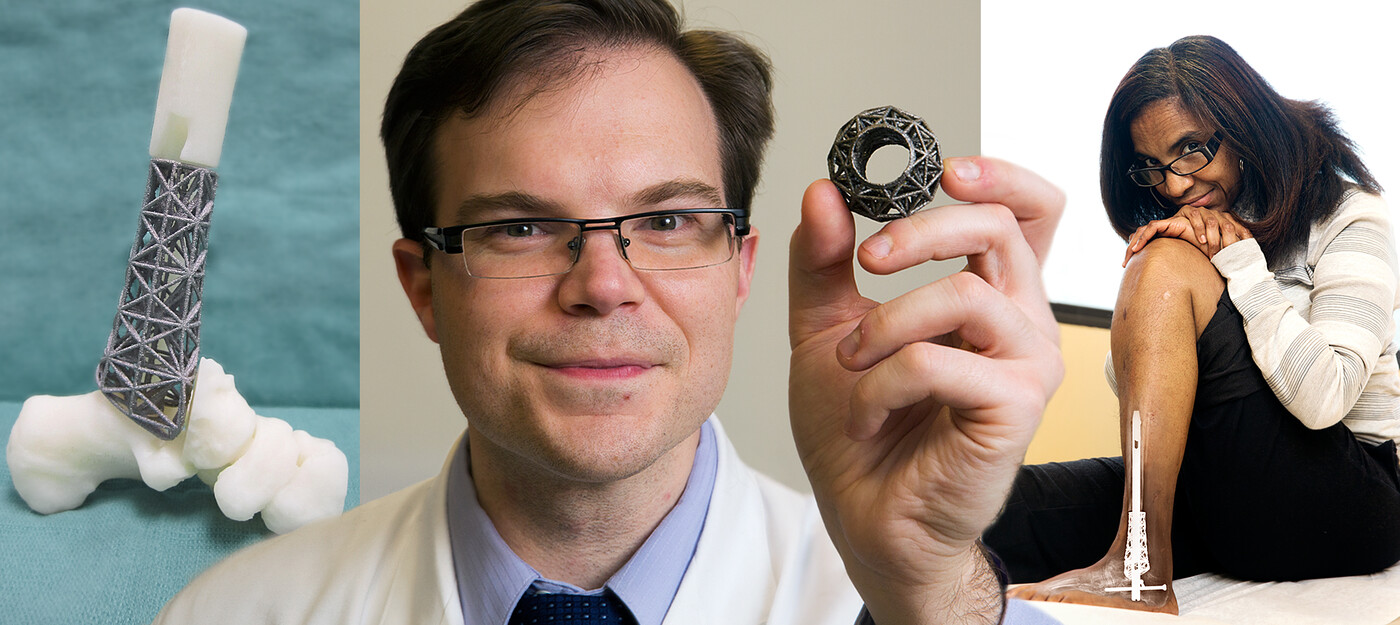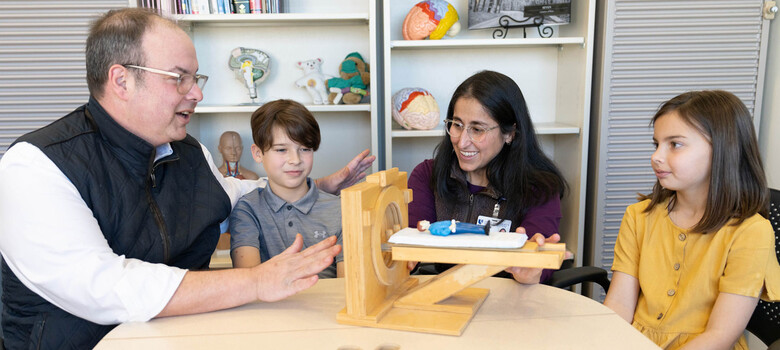 From the DukeHealth.org archives. Content may be out of date.
From the DukeHealth.org archives. Content may be out of date.
3D Printed Bone Implant Saves Woman’s Leg

A 3D computer-printed bone implant saved Ruth Smith-Leigh’s leg from amputation, and allowed her to walk again following a terrible car accident.
Stronger Than Her Bone
Ruth Smith-Leigh of Halifax, VA was driving home from a birthday party with her two young boys when their car was hit head-on. Her boys were fine, but Smith-Leigh’s left leg was severely injured. She was transported to Duke University Hospital in Durham where she underwent emergency surgery.
“I thought I had a bad break but I didn’t realize all the complications,” Smith-Leigh recalled.
After learning amputation was a possibility, Smith-Leigh went to see Duke orthopaedic surgeon Samuel Adams, MD, a foot and ankle specialist who had something else in mind. He recommended a 3D computer-printed, custom bone implant.
The computer prints “a titanium cage to replace the missing bone,” Dr. Adams explained. The cage works just like the scaffolding inside a building; it distributes forces around the entire structure while allowing the bone to maintain its structural integrity.
However, this FDA-approved medical device does more. It actually creates a response within the remaining bone, which encourages the bone to grow back within the cage.
The end result, said Dr. Adams, “is a structurally sound device that is stronger than her bone.”

“It’s a miracle,” she said. “It is the most awesome experience ever. I am able to wear a shoe with an ankle support.”
‘I Can Have a Normal Life’
The custom implant is created from a CT scan sent by Dr. Adams to a Texas-based company. Together, they refine the implant based on where it needs to go, and what it needs to accomplish.
Four months after her February 22 car accident, Smith-Leigh underwent surgery to have the implant placed in her leg. Six weeks later she was out of her wheelchair for the first time since the accident. By November, she was back to work as an elementary school teacher.
“It’s a miracle,” she said. “It is the most awesome experience ever. I am able to wear a shoe with an ankle support.”
As Smith-Leigh continues to heal, Dr. Adams said X-rays show the bone is growing into the implant. She will never regain flexibility in her injured ankle, but she said, “I can have a normal life. Considering the alternative, I’ll take that any day.”
3D Bone Implants: Many Exciting Possibilities
Only a handful of people have received 3D printed bone implants; Smith-Leigh was the first in the Southeast to receive one to salvage a limb. However, Dr. Adams said the 3D bone implants open the door to many exciting possibilities, including saving limbs that have been damaged by trauma or tumors – conditions that typically required amputation.
“Before this, we didn’t have anything to replace a large defect. Now we have this technology.” One day, he said, it may also replace the use of cadaver bone, which is the current replacement option for deformity corrections and defects.
“3D bone implants are a much stronger alternative,” Dr. Adams said.
Learn More
See Ruth Smith-Leigh's story on WRAL.



